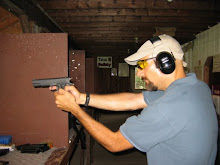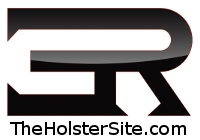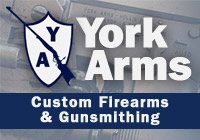I'd like to have your opinion on good motorcycles for beginning bikers. I've been in *WANT* mode for a long time now, and still don't have the permit or plans to take the class, but I drool over every bike I see and would like to know both from you and your readers what your opinion is of a good "first" bike to think about. Maybe having a narrow list to choose from would be good motivation.This is an excellent question, and one that is fraught with peril. What might be the perfect beginner bike for one person might be absolute screaming death on a stick for another person. I'm going to offer a few general guidelines and suggestions, but the real bottom line is to ride whatever you're comfortable riding. I've known folks that have started out on 500cc Kawasakis and 1500cc Hondas; guys who have never ridden a day in their lives getting a $35,000 Harley or a $50,000 show bike; and, most often resulting in the tragic or the hilarious, a teenaged boy getting a 1,000cc sportbike.
In general, there's three main types of bikes for the beginner: Sportbikes, cruisers, and standard motorcycles. Touring bikes are simply too large and unwieldy for someone just learning to ride; superbikes are too much temptation; and dual purpose bikes aren't set up for the novice rider in mind. All three categories have reliable, affordable offerings that are forgiving for new riders and can be found in a multitude of configurations. I'll discuss samples from each category shortly.
A few caveats to start, though. First off, take the Motorcycle Safety Foundation (MSF) Basic Rider Course. They're great instructors and offer classroom and saddle time instruction. Secondly, whatever style of motorcycle the new rider chooses, look for something relatively recent - in the entry-level market, even new bikes aren't terribly expensive and, as beginner bikes, can be very reasonable even 2-5 years old. The beginner is looking to gain experience riding a motorcycle, not spending hours turning a wrench on the weekend or waiting for their bike to be fixed. And lastly, most manufacturers hold "open house" events at their dealership where they offer demo rides - this is an invaluable way to try out a number of vehicles without plunking down the cash.
Sport bikes. A smaller (under 600cc) sport bike like the Kawasaki Ninja 500 offers nimble handling without being more than the novice rider can handle. Even 600cc bikes can quickly get away from new riders, and the racey styling and go-fast power and handling increase the likelihood of a new rider trying to out-ride their abilities. Sportbikes are generally pretty light, so they make slow-speed maneuvering such as backing out of a spot easier; the downside is that with the tight rake (how the fork is angled to the ground), turns need to be more precise than a low-slung cruise with a more open rake.
Cruisers. Because of differences in gearing and torque, cruisers like the Yamaha V-Star Classic with larger engines (up to 800CC) are often good choices for new riders. The cruiser often sits lower, allowing the new rider a more stable platform to learn to ride; they're balanced for more even cruising; and they are generally geared on the taller side for easier starts and lower cruising RPMs. Downside to getting a cruiser as your beginner bike is that they're generally more expensive than either other option; however of the three you're least likely to outgrow a 750cc cruiser too quickly.
Standard bike. The "standard" motorcycle, like the Honda Nighthawk 250, is the least expensive of the three options, often only costing as much as a scooter in the grand scheme of things. When I took the MSF Basic Rider Course, they had Nighthawk 250s (and Suzuki GN125s!) for the new riders, and the 'Hawk was eminently controllable. Standard motorcycles are currently out of favor, as companies churn out cruisers to match Harley Davidson or sport bikes to catch Ducati, but there's plenty of used 250 Nighthawks kicking around to pick up. These will be the least expensive bikes you'll find, but they will also be the ones you outgrow fastest.
One last thing re: "outgrowing" a beginner bike. This is one of the danger zones for the not-quite-so-new rider, when they start to get comfortable with riding and start to push the envelope on their beginner bike. I actually went backwards, starting off with a Yamaha 850 as my first bike and upgrading to a new(er) Honda Magna 750; the Yamaha was in rough shape when I bought it (hence why I recommend looking for something newer than 15 years old!) and I spent more time repairing than riding; the Honda I bought in excellent shape and rode from Day One.
After about four or five years, though, the 750cc engine wasn't really cutting it for me, and I noticed myself starting to "push" things - winding the motor up in each gear, leaning the bike over more and more in each turn, gunning the throttle too much from take-off. I was starting to outgrow my bike, having five years of riding experience under my belt most of which on the same bike. The Honda sat in the back of my garage for a few years, and then in 2003 I fell in love with the black beauty FLHT that I'm still happily riding.
When you feel yourself starting to get comfortable on a motorcycle it's a good thing; complacency, however, can kill.
That is all.
PS: Let me know what you end up getting - ideally with pics!







14 comments:
Truly an excellent topic... especially for us EMS types since we've had the opportunity to scoop battered bodies off pavement from time to time.
Personally, being of the old school, I'd advise avoiding the crotch rockets and the cruisers. Even a small sport bike can be too quick for a novice to adjust, and the cruiser's added weight lends peril in cornering and emergency brakeing situations.
Your recomendation of the Honda Nighthawk would closer match my suggestion for a "training scooter." Servicable used bikes of this catagory can be found daily on Craigslist, and due to their relative unsexiness, they can be had for cheap.
I'd also emphasize boots, gloves and helments. You wisely mentioned the MSF safety course, which insists on "no skin below the chin" for trainees.
Despite the fact you may quickly outgrow it, I'm gonna recommend a small starter bike, like the 250 Yamaha V-Star (formerly the 250 Virago) which looks like a little Harley, the sporty Ninja 250, or even the ugly honda rebel. They are light and nimble and a LOT easier to handle then a larger bike. Yes, you will most likely outgrow it in a year or 3 (or not. if you are a small person or not cruising long distances on the highway you may be perfectly happy with a 250), but that disadvantage is also an advantage. They are cheap enough brand new, and are often sold used after only a few thousand miles at a substantial discount. You should be able to pick up a 2-3yr old model in mint condition and low miles for under $3000 (half that if you shop carefully for an older model). After that initial depreciation they don't drop all that fast in value. If you outgrow it you will be able to resell it for close to what you paid for it if you take care of it. Also, this gives you an inexpensive entry in case you decide it's not for you. Some of those bigger bikes cost more then a cheap car. It's like with shooting. You don't tell new shooter to buy a .45 Colt Gold Cup as a first pistol.
You get a starter bike, and after riding it for a while you'll have a better idea of what you want out of a bigger bike.
And I can not stress enough... TAKE THE MSF CLASS!
+1 on Mopar.
I rode dirt bikes on my youth, so My first street bike was a 750 Honda, and I was comfortable with the size because I had ridden plenty before I bought it. I don't recommend this method, though, as dirt bikes in a muddy field handle substantially different than a street bike on pavement.
I highly recommend a small 250cc bike as a beginner, and yes, you'll likely sell it in a year or so, but, again, if you buy it used, you won't lose much on it. (the rebels can usually be found used for around $1500-$2000).
And, of course it's been said, but it bears repeating: Helment and riding gear are a must!
Great post, and an important one.
Mopar is spot on. Something like this 2007 Virago with less than 1,400 miles, found on the Dallas Craiglist.
Nice post Jay! I've been in the same mode as Maureen for a few years now, just waiting for my financial situation to reach the point I can afford a bike + insurance.
I'm STILL mad at Dad for selling his to someone else ('76 Honda 250XL). It was in pretty good shape, and would have made a great starter bike.
Every time I'd ask he would say "I have to live with your mother." Dangit.
Thanks so much, Jay and everyone. I absolutely plan to take the safety course first. No question on the helmet, gloves, etc. I'm going to save both your post and all of these comments for the time when I move from WANT mode to HAVE mode.
I can't really argue with anything anyone's said here. I've used a Honda Shadow VLX (600cc) to teach two brand new riders with good results.
The advantage to the slightly bigger beginner bike is that you don't outgrow it quite so quickly, but it is a little heavier and has more power than the 250's that others have recommended.
I absolutely don't recommend a "crotch rocket" style bike for beginners, even the 250cc ones. Contrary to the opinion of every 16 year old boy on the planet, that style of bike is not for beginners IMHO.
One thing that I HIGHLY recommend is buying used for your starter bike.
You WILL drop it when first starting out. It's a real shame to ding up a brand new bike and decrease its resale value as a result.
If you start out with a cheaper used bike that already has some "character marks", it won't hurt quite as badly (at least not emotionally) the first time you forget to put your feet down at an intersection and fall over with it.
yep, all good suggestions here. i'd also like to emphasize gear. helmet (Scorpion makes excellent lids that aren't expensive but carry the protection and fitment of the top brands...it's rated #3 behind Arai and the other expensive one i can't think of right now), gloves (because getting a bee lodged in your knuckle at 65mph really, really sucks), armored jacket (leather not necessary for this - there are textile and mesh jackets out there that offer excellent protection with comfort), armored or kevlar-lined pants (see: Draggin' jeans and others), and armored boots.
also: when shopping for a bike, bring someone along who knows what they're looking at. this goes for anyone who's new to the hobby. i didn't, and i got burrrrrrrrned on my purchase...still not riding after owning my bike for the past 2 years because i bought a turd. if you buy through a private sale, make sure they'll let your experienced friend take it out for a test drive.
no matter what, make sure you're comfortable on that bike before you buy it. the sport bike seating position can be terrifying for someone who's never been on a bike before. fortunately, smaller sport style bikes (like the Kawasaki Ninja 500 and 250) can have standard seating configurations with sportier styling.
finally - and most importantly - keep the sticky side down and shiny side up, and enjoy the ride. :)
Get your lid, take the MSF course and start looking for a bike that won't look too much worse when you lay it over at a stoplight.
Try to avoid stuff pre-1982 or so because of the breaker point ignition and general deterioration of parts like brake hoses and cables.
That said, if someone has a Honda 350 or any of the Suzuki 400-1000cc bikes from the '70s, I'd make an exception there.
I started with all the requisites mentioned: a buddy who watched over me, safety course, and a used V-Star 650. I LOVE the bike but I am outgrowing it, just as my buddy and the salesman told me I would. Hard to imagine, as the 650 just felt gigantic and unwieldy when I first mounted up, but now...
Yeah, I'm looking for the next size up, but it WILL be another V-star.
Count me as another who won't advise a small bike to start.
I (and Spoon, and Squeaker, and a few others) all started on a Kaw ZL600. None of us has ever had a problem with that bike.
Reason I advise something "mid sized": defensive driving. Quite often (IME), your only defense while riding is in your left hand: if the bike doesn't have the power to get up and haul a bit, you stand a very good chance of getting run over. That said...
I've also seen a LOT of folks who got something too big for their skill level. When I took the MSF course, the last years' data on motorcycle fatalities in WI was 100: something like 60+% were Harleys. Some of that was due to alcohol, but a fair number were people that just got more bike than they could handle...
Kawasaki Vulcan 500, just saying, not much bigger than one of the 250s, but a little more get up and go, without being too big.
Step 1: Go shopping for helmet, jacket, gloves and some low soled boots which are not slip ons. That will cost $500-$1000 depending on shopping habits but you must do this. If you can't afford this, you can't afford to ride.
Step 2: MSF course.
Step 3: Decide what kind of rider you want to be. The gear you bought in 1 will tell the tale. Motorcycles are about image as much as anything and that's fine. Don't con yourself into thinking you'll be happy with a cruiser starter if you want to ride rockets. The identity crisis is not worth fighting yourself over.
Step 4: Look for something in the 500-650cc range of whatever style you want to become. The less plastic the better since you will drop it. 250cc is too small to get out of trouble IMO. And unless it's a dirt bike nobody loves a 250. This is important when it's 90 degrees out and riding to work is on the agenda.
Stick to a brand from Japan, Britain (newer) and Germany and you'll be fine. I'd even offer that an HD sportster would work depending on the rider's body style - they're low, don't have overwhelming power bands, and get you entry to the HD image if that's the kind of rider you want to be.
I'd avoid anything from Italy as a first bike and probably something in the last decade. As Jay mentions, you want to ride it not fix it when you're first starting.
I wouldn't discount the dual sport market if that's interesting for you. The KLR650 and equivalents will take a beating and keep on eating miles. Taller, which is tough on beginners, but maybe you have a 36" inseam?
Finally, bikes are very often about community. Look around for a mailing list or online forum dedicated to the brand or bike or style you're drawn toward. You'll learn what models to avoid and what you might be in for.
Oh, and have fun! ;)
Post a Comment